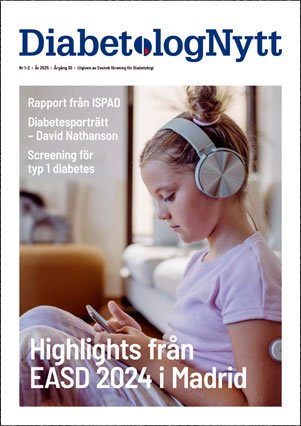Exposure to low socioeconomic status, reflected in the need for income support, appears to increase the risk for death in patients diagnosed with type 1 diabetes during childhood who died after age 18 years, according to research published in Diabetes Care.
“The current study indicates that having parents with low socioeconomic status leads to additional excess mortality among young adults with childhood-onset type 1 diabetes in Sweden,” the researchers wrote.
Yonas T. Berhan, of the department of clinical sciences in pediatrics at Umeå University, and colleagues analyzed data on 14,647 patients with childhood-onset type 1 diabetes from the Swedish Childhood Diabetes Registry (1978-2008) to assess the impact of parental and individual socioeconomic status on all-cause mortality.
Using unique personal identification numbers, the investigators linked the diabetes registry to the Swedish Cause of Death Registry and the Longitudinal Integration Database for Health Insurance and Labor Market Studies. Data on educational level and need for income support through the Swedish social welfare system were gathered for parents and patients from 1990 to 2010.
During an average follow-up of 24 years, 238 deaths occurred in 349,762 person-years at risk. In crude analyses, low maternal education predicted death for men (P = .046) and parental income support predicted death for both men and women (P < .001 for both).
Using Cox models stratified by age at death and adjusted for age at onset and sex, parental income support predicted death among young adults aged at least 18 years, but not children.
When socioeconomic status for adult patients was included in Cox models, income support to the patient predicted death at age 24 years or older, with adjustments for age at onset, sex and parental socioeconomic status.
“Diabetes care teams should be aware of this problem and make efforts to minimize these effects,” the researchers wrote. “Social workers should preferentially be involved on the diabetes team during both childhood and adulthood.” by Allegra Tiver
Disclosure: The researchers report no relevant financial disclosures.
ABSTRACT
Impact of Parental Socioeconomic Status on Excess Mortality in a Population-Based Cohort of Subjects With Childhood-Onset Type 1 Diabetes
- Yonas T. Berhan1⇑,
- Mats Eliasson2,
- Anna Möllsten1,
- Ingeborg Waernbaum3,
- Gisela Dahlquist1,
- on behalf of the Swedish Childhood Diabetes Study Group 2013
1Department of Clinical Sciences, Pediatrics, Umeå University, Umeå, Sweden
2Department of Public Health and Clinical Medicine, Sunderby Research Unit, Umeå University, Sweden
3Department of Statistics, Umeå University, Umeå, Sweden
- Corresponding author: Yonas T. Berhan, yonas.berhan@telia.com.
Abstract
OBJECTIVE The aim of this study was to analyze the possible impact of parental and individual socioeconomic status (SES) on all-cause mortality in a population-based cohort of patients with childhood-onset type 1 diabetes.
RESEARCH DESIGN AND METHODS Subjects recorded in the Swedish Childhood Diabetes Registry (SCDR) from 1 January 1978 to 31 December 2008 were included (n = 14,647). The SCDR was linked to the Swedish Cause of Death Registry and the Longitudinal Integration Database for Health Insurance and Labour Market Studies.
RESULTS At a mean follow-up of 23.9 years (maximum 46.5 years), 238 deaths occurred in a total of 349,762 person-years at risk. In crude analyses, low maternal education predicted mortality for male patients only (P = 0.046), whereas parental income support predicted mortality in both sexes (P < 0.001 for both). In Cox models stratified by age-at-death group and adjusted for age at onset and sex, parental income support predicted mortality among young adults (≥18 years of age) but not for children. Including the adult patient’s own SES in a Cox model showed that individual income support to the patient predicted mortality occurring at ≥24 years of age when adjusting for age at onset, sex, and parental SES.
CONCLUSIONS Exposure to low SES, mirrored by the need for income support, increases mortality risk in patients with childhood-onset type 1 diabetes who died after the age of 18 years.
- Received June 23, 2014.
- Accepted January 31, 2015.
Nyhetsinfo
www red DiabetologNytt


